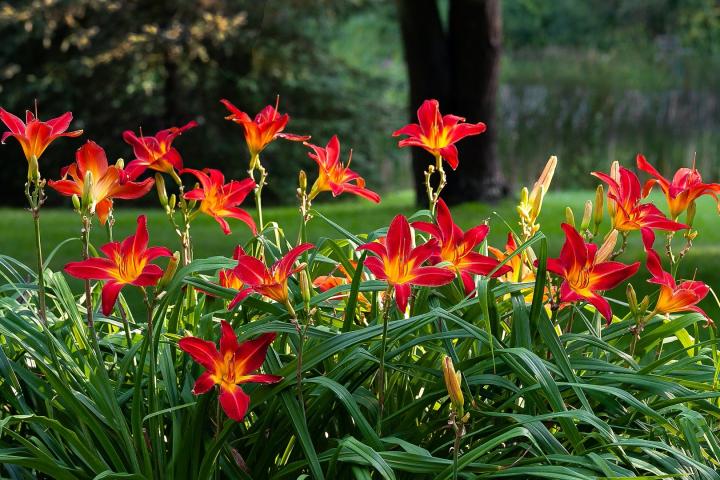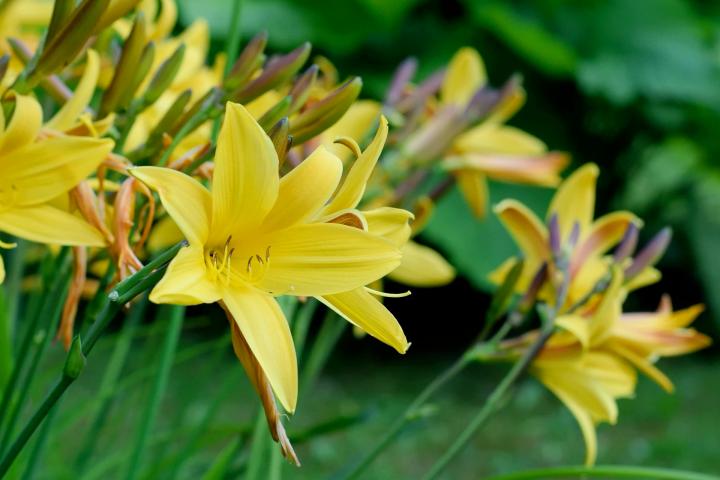
Also receive the Almanac Daily newsletter including gardening tips, weather, astronomical events, and more.
Planting, Growing, and Caring for Daylilies
Cooking Notes
Daylilies are edible and have a long history in the kitchen. The tender foliage was eaten as a spring green, the buds and flowers were eaten raw and added to soups, and the swollen portions of the root were boiled and eaten. All parts have a mild peppery taste and act as a thickening agent when cooked in stews, soups, or sauces.
- Try sautéeing daylily buds in some butter and garlic. They taste like a cross between green peas and asparagus.
- Dip daylily buds in a light batter and deep-fry them. Sprinkle with salt, and you have a special summer treat!
ADVERTISEMENT
What are the bulbous pods on the ends of my daylily scapes...????
What do i do with them..???
Those are called aerial bulbs. They contain the genetic material needed to start a new flower. In nature, they drop to the ground to eventually form flowering bulbs. You can simply pull them off, you make sure there is more energy to form flowers next year. Or, you can harvest and plant in a furrow (similar to peas) in a protected area that won’t be disturbed; in a few years, they’ll grow into bulbs.
I have what looks like an entire new plant growing on the side (stem) of my daylily scapes. Can I plant this and get a new plant?
Yes, you can. I’ve done this many times.
Will day lilies survive in soil that get a lot of winter sidewalk salt?
Yes, daylilies are salt-tolerant. You’ll see they are popular perennials planted near roads and sidewalks.
Are the orange day lilies good for bees? Are they good pollinators?
Hi, Peggy. Bees and many other pollinators love orange daylilies. They are an excellent choice to welcome nature’s beneficial insects (little heroes!) to your garden.
Another consideration (at least in Central Maryland) is that Daylilies (and any Lily for that matter) are like candy to White-tailed Deer. We went away for a few days one June as our Daylilies were budding. When we returned every bud had been nipped off by the deer. I must constantly use Deer Repellent to keep our lilies intact.
I was just about to leave a comment about the deer factor (I'm in upstate NY) but you got here first!











